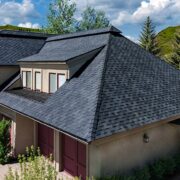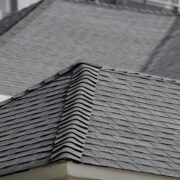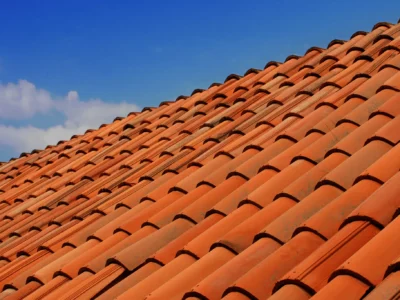Components of an Architectural Asphalt Shingle Roofing System
The roof on your home or on your enclosed patio is more than just a layer of shingles. A roof is a system of barriers that serves to protect your home from the elements and look good while doing it. There are a lot of things from which you can take inspiration for example, treehouse ideas which gives some rustic roof designs. If you’re in the process of considering estimates from roofing contractors for a roof replacement or new roof installation, it can help to know what all those components are so that you can ensure that you get a full roofing system. This article will lay out all the parts, what they do, and why they’re important.
Roof Deck & Underlayments
Your roof is framed out with lumber and sheathed in plywood or OSB (oriented strand board) decking. It’s a building code requirement (International Residential Code R905.2.1) that your asphalt shingle roof be nailed to a “solidly sheathed deck”, so if any of your decking is rotted or water-damaged or warped and wobbly, you’ll want to make sure your roofer is going to replace it. Once you’re sure that your sheathing is solid, it’s important that your asphalt shingle roof satisfies another building code requirement: depending on your geographical area, your local building codes probably call for “Ice Barrier” (IRC R905.1.2), which is a peel-and-stick membrane that gets applied in valleys, along eaves, and around vent pipes and flashing and chimneys, etc – everywhere there is a likelihood of ice forming. This underlayment is accompanied by regular roofing felt or synthetic underlayment, both of which act as an important water barrier to help protect your roof deck and structure. Make sure your roofing contractor is going to replace and install new underlayment and ice-and-water barrier. Go here to seek advice for your roof.
Flashing – Step, Apron, Pipe Jacks, Chimney
Flashing is really important, and there are different types. Flashing is intended to divert water away from problem areas where it can leak, and is installed everywhere there is a break in the continuous slope of the shingles, like where walls meet the roof or where vent pipes come through or where a chimney is located. Step-flashing is an L-shaped piece of aluminum that is installed along the slope of a roof where it meets the wall, and it is often weaved between the shingles. Apron-flashing is similar, but it is typically installed where a wall runs perpendicular to the slope of the roof, like in the front of a dormer. Pipe-jacks, also known as pipe boots, are a piece of metal flashing coupled with a rubber gasket that protects the vent pipe from leaking. Chimney flashing is also very important, and usually includes step- and apron-flashing cut into the chimney. Most of these flashings also involve the use of roofing cement or lap caulk, and it is really important that flashing is installed correctly to prevent leaks. These are very problematic areas of a roof, so make sure your roofing contractor intends to replace these items and stand behind their water-tightness with an installation warranty.
Starter Shingles, Ridge Vents & Ridge Caps
Starter course shingles go around the perimeter (usually along the eaves and the rakes) and are installed underneath the main shingle to help reinforce the perimeter, to prevent blow-offs from high winds. Most manufacturers make their own specific starter course to go with their shingles. Similarly most, if not all, manufacturers of architectural shingles will require a ridge vent to qualify for their warranty. This is at the peak of the roof, and it allows the home’s attic to vent properly, which will save your roof deck from warping due to heat. Roofs used to be adorned with aluminum ridge vent that was installed right over the top of the shingles but now it is more typical to use shingle-over style ridge vent which has color-matched ridge cap shingles installed over it, as it is much more aesthetic and more leak-proof because the nails are covered by the shingle. If you have a storm damage insurance claim you should make sure that your roofer is going to install a ridge vent because most older roofs do not have ridge vent, and insurance only pays for what is there. A good roofing insurance claim specialist will install it anyway, or at least charge you the extra for it, so make sure you ask.
Finally, Shingles!
Shingles have come a long way. If your roof is 20+ years old it is likely a 3-tab style asphalt shingle, most of which are 20-year or 25-year products that have essentially become obsolete. Easily damaged by wind and less aesthetic than their architectural style replacement, the 3-tab is hardly ever installed anymore. Newer “lifetime” architectural or dimensional shingles come with a 40 to 50-year warranty from the manufacturer, are thicker and heavier so they withstand storm damage better, and are hardly more expensive to use. They come in a wide range of colors meant to immitate the look of wood shake to slate stone, to even greenish copper immitations – you’re sure to find a color that matches your home perfectly.
Make sure you don’t only focus on the color and the outer appearance! Now you know it’s all the other components that truly matter when it comes to the longevity of your roof and the protection of your home. Choose your roofer wisely!










Comments